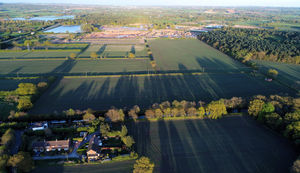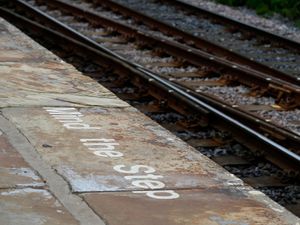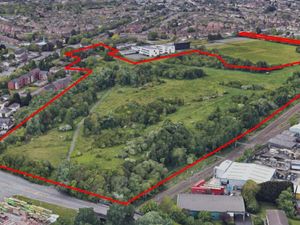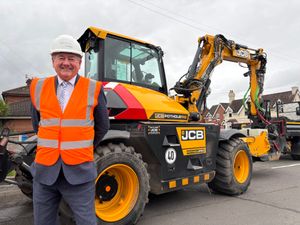Gailey Freight Hub: our fight against these 'monstrous plans'
A year ago an envelope came through our letterboxes announcing that a selection of warehouses called an SRFI (Strategic Rail Freight Interchange) – bigger than the NEC – was to be built on the farmland around the Staffordshire communities of Gailey, Four Ashes and Calf Heath.

Not just that, but it would create a massive increase in traffic for Penkridge, Coven, Brewood, Cannock and the M6. That was the first public consultation.
After the initial shock, neighbours spoke to neighbours; some had contacted their MP, others their parish or district councillors.
An initial meeting occurred – disjointed but determined – and a few key requirements were agreed.
From that start, our small group expanded rapidly by word of mouth and the wonder of modern communications.
A Facebook page and two websites helped to spread the message.
Meetings were held at each local government level, and experts and groups that had faced a similar threat were contacted (there are lots of these projects ). Both local MPs added their support.
But the proposers had a well planned strategy, worked out over several years: first to complete detailed research for the area, then secure funding and bring in top consultants.
They discreetly had talks with county and district councils, the Planning Inspectorate, highways and rail agencies – then immediately hit the local communities with a professional looking proposal for a rail freight terminal complete with numerous rail tracks together with a more benign proposal showing negligible railway infrastructure. It was launched with a questionnaire asking “which would you prefer?”
Thankfully people were not so easily fooled and only sent instructions on how to roll it up.
Far from a planet saving ideal, this proposal piggy backs on a county permission allowing the owner to extract sand from part of the land then to return it to agricultural use. We are closely watching this.
The Planning Act 2008 created an opportunity for rich land owners.
Rail freight is heavily promoted by the government to replace bulk coal transport and as an attempt to reduce the number of HGVs on the road.
Unfortunately the legislation to promote a network of Strategic Rail Freight Interchanges around the country has left their positioning in the hands of private investors.
Inevitably, those regulations get reverse engineered, to create large industrial facilities next to major road and rail networks and classify them as SRFIs by fulfilling some simple requirements.
It can then be argued that they need to be built on green belt land.
There is no issue with the principle of rail freight – what is being abused here – is the location. It's in the wrong place.
That's not NIMBYism. If an SRFI is not located near an end user, or producer, or adjacent to a large conurbation, then the result is catastrophic.
Then freight has to be unloaded from trains to HGVs to be transported to those end users – generating more local road trips than would have occurred without the rail contribution. Its called the last mile syndrome.
Rail freight only works economically over long distances (over 100 miles), and runs mainly at night due to passenger train allocations during the day.
So double handling and storage always becomes necessary.
The M6 passing through Staffordshire is one of the busiest sections of road in the UK. Instead of rail traffic bypassing that section or existing HGV traffic travelling unchanged, this proposal would inject thousands of extra lorries per day into the worst possible point.
Our local roads are part of a strategic network. When an incident happens on the M6 (a common occurrence) the traffic is routed via those roads and lengthy jams frequently occur. To add an extra 6,300 HGVs and 12,300 cars and vans per day to that would be a recipe for disaster. The suggestion that traffic could be prevented from travelling through Penkridge smacks of trying to placate the town.
So after already blighting house prices in the area, the West Midlands Interchange proposal would not only flaunt the purpose of the green belt and disrupt the local road network, but also kill us off with diesel fumes. We also want to discuss the the loss of prime agricultural land; the destruction of a vast number of mature trees, flora and fauna and the quoted 8,500 employees travelling to work.
The statutory consultation stage is now in progress – so visit the current public consultations at Penkridge, Coven and Calf Heath. This is a chance to gain information and harangue the proposer. We will be on duty there as well – come and talk.





